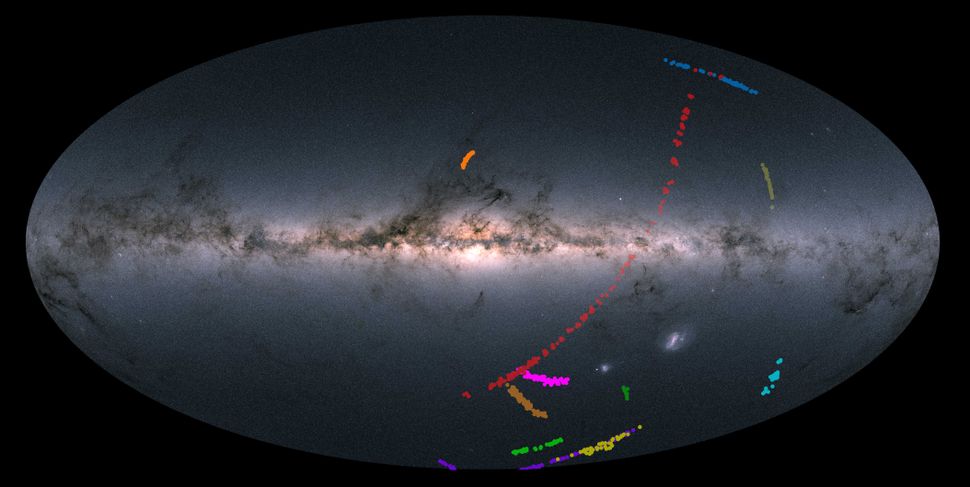Shredded 'stellar streams' could lead to the Milky Way's missing dark matter
By Brandon Specktor published about 7 hours ago
The eerie streams could also reveal which galaxies the Milky Way has gobbled up over the years.

An artist's representation of the MIlky Way surrounded by shredded stellar streams (Image credit: James Josephides and S5 Collaboration)
Vast rivers of stars swirl around the Milky Way, cutting against the current of our galaxy's halo in a complex gravitational dance. According to a new study of these so-called stellar streams, their offbeat orbits may be the key to uncovering the troves of invisible dark matter lurking within our galaxy.
In the study — which was accepted to be published in the Astrophysical Journal and is available to read on the preprint database arXiv.org — an international team of astronomers used observations from two telescopes to map the orbits, velocities and compositions of 12 stellar streams crisscrossing the Milky Way.
Stellar streams are the remnants of ancient collisions between the Milky Way and smaller neighboring star clusters; when these petite neighbors come in contact with the comparatively massive Milky Way, our galaxy's gravity tugs and warps them, sometimes pulling them into spaghettified strands that orbit the fringes of our galaxy.

Location of the stars in the dozen streams as seen across the sky. The background shows the stars in our Milky Way from the European Space Agency’s Gaia mission. (Image credit: Ting Li, S5 Collaboration and European Space Agency)
The team used computer models to unwind these stretched-out streams and determine where they originated. Based on the speed and composition of the stars in each stream, the team found that six of the streams came from nearby dwarf galaxies (small galaxies containing up to several billion stars), while the other six originated from globular clusters (much smaller gravitational-bound bodies that contain up to a few thousands stars).
More:
https://www.livescience.com/stellar-streams-reveal-dark-matter-milky-way

